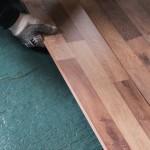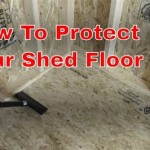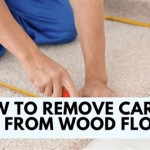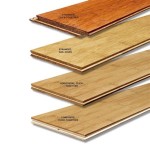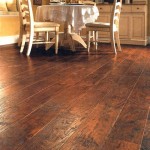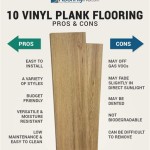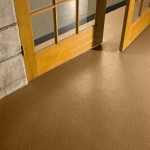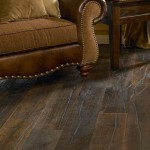How to Remove Sticky Tape Residue From Wood Floors
Sticky tape residue on wood floors is a common household challenge. It often appears after removing masking tape used during painting projects, duct tape employed for temporary repairs, or even adhesive labels that were inadvertently placed directly onto the wood surface. This residue, if left unattended, can attract dirt, become more difficult to remove over time, and potentially damage the finish of the wood floor. Understanding the nature of adhesive residue and employing appropriate removal techniques are crucial for maintaining the appearance and longevity of wood flooring.
The composition of most sticky tape residues typically involves a combination of polymers, plasticizers, and tackifiers. These substances contribute to the adhesive properties of the tape, allowing it to bond to surfaces. When the tape is removed, a portion of this adhesive mass often remains, particularly if the tape has been subjected to heat, pressure, or prolonged exposure to air. The residue can range from a thin, barely perceptible film to a thick, gummy deposit, depending on the type of tape used and the duration of its application.
The success of sticky tape residue removal depends largely on the type of finish applied to the wood floor. Wood floors can be finished with a variety of materials, including polyurethane, varnish, oil, or wax. Polyurethane and varnish finishes are generally more durable and resistant to solvents, while oil and wax finishes are more susceptible to damage from harsh chemicals. Therefore, it is essential to identify the type of finish before attempting to remove any adhesive residue.
Before attempting any residue removal method, it is advisable to test a small, inconspicuous area of the floor. This testing process allows for the assessment of the potential impact of the chosen method on the floor's finish and ensures that it will not cause discoloration, dulling, or other forms of damage. This precautionary step is especially important when dealing with antique or delicate wood flooring.
Key Point 1: Gentle Cleaning Methods
Gentle cleaning methods should always be the first approach in removing sticky tape residue from wood floors. These methods typically involve the use of readily available household items and pose a minimal risk of damaging the floor's finish. Several options are available, each with varying degrees of effectiveness depending on the nature and severity of the residue.
One common method involves the use of warm water and a soft cloth. Dampen the cloth with warm water and gently rub the affected area. The warmth of the water can help to soften the adhesive, making it easier to lift from the floor. Avoid using excessive water, as this can seep into the wood and cause damage. After rubbing, dry the area thoroughly with a clean, dry cloth.
Another gentle cleaning option is to use a mixture of warm water and dish soap. Add a small amount of mild dish soap to warm water and stir to create a sudsy solution. Apply the solution to the residue with a soft cloth and gently rub. The soap can help to break down the adhesive bonds, facilitating removal. Rinse the area with clean water and dry thoroughly.
For more stubborn residue, consider using a paste made from baking soda and water. Mix baking soda with water to form a thick paste. Apply the paste to the residue and let it sit for a few minutes. The baking soda acts as a mild abrasive, helping to lift the adhesive. Gently rub the paste with a soft cloth and rinse with clean water. Dry the area thoroughly.
Alternatively, a microfiber cloth can be used to gently buff the residue away. The fine fibers of the microfiber cloth can effectively lift the adhesive without scratching the floor's finish. Dampen the cloth slightly with water and rub the affected area in a circular motion.
Key Point 2: Solvent-Based Cleaning Methods
If gentle cleaning methods prove ineffective, solvent-based cleaning methods may be necessary. These methods involve the use of chemicals that can dissolve the adhesive residue. However, caution is advised when using solvents, as they can potentially damage or discolor the floor's finish, especially on floors with oil or wax finishes. Therefore, thorough testing in an inconspicuous area is crucial before applying any solvent to the residue.
One commonly used solvent is mineral spirits, also known as paint thinner. Mineral spirits are effective at dissolving many types of adhesive residue. Apply a small amount of mineral spirits to a clean cloth and gently rub the affected area. Avoid pouring mineral spirits directly onto the floor. Allow the solvent to sit for a few minutes to soften the adhesive, then wipe away with a clean cloth. Ensure adequate ventilation when using mineral spirits, as they can produce harmful fumes. After cleaning, wipe the area with a damp cloth to remove any residual solvent and dry thoroughly.
Another option is isopropyl alcohol, also known as rubbing alcohol. Isopropyl alcohol is a milder solvent than mineral spirits and may be suitable for more delicate finishes. Apply a small amount of isopropyl alcohol to a clean cloth and gently rub the residue. As with mineral spirits, avoid pouring the alcohol directly onto the floor. Wipe away the residue with a clean cloth and dry thoroughly.
Commercial adhesive removers are also available at most hardware stores. These products are specifically formulated to dissolve adhesive residue and often contain a blend of solvents. Choose an adhesive remover that is specifically designed for use on wood floors and follow the manufacturer's instructions carefully. Always test the product in an inconspicuous area before applying it to the residue.
When using any solvent, it is important to work in a well-ventilated area and to wear gloves to protect your hands. Avoid prolonged contact with the solvent, as it can irritate the skin. Keep solvents away from heat and open flames, as they are flammable.
Key Point 3: Physical Removal Methods
In some cases, physical removal methods may be necessary to remove sticky tape residue from wood floors. These methods involve the use of tools to scrape or lift the residue from the floor. However, caution is advised when using physical removal methods, as they can easily scratch or damage the floor's finish if not performed carefully.
One option is to use a plastic scraper or putty knife. These tools are less likely to scratch the floor than metal scrapers. Gently slide the scraper under the edge of the residue and carefully lift it away from the floor. Avoid applying excessive pressure, as this can damage the finish. If the residue is difficult to remove, try softening it with warm water or a solvent before scraping.
A credit card or other plastic card can also be used as a scraper. The edge of the card can be used to gently lift the residue from the floor. As with a plastic scraper, avoid applying excessive pressure and soften the residue if necessary.
Another physical removal method involves the use of a hair dryer. Heat the residue with a hair dryer on a low setting to soften the adhesive. Once the residue is softened, gently scrape it away with a plastic scraper or credit card. Be careful not to overheat the floor, as this can damage the finish.
For very stubborn residue, consider using a razor blade scraper. However, exercise extreme caution when using a razor blade, as it can easily scratch the floor's finish. Hold the razor blade at a shallow angle to the floor and gently scrape the residue away. Use short, controlled strokes and avoid applying excessive pressure. This method is best left to experienced individuals.
After any physical removal method, it is important to clean the area thoroughly to remove any remaining residue or debris. Use a damp cloth to wipe the area and dry thoroughly.
In conclusion, removing sticky tape residue from wood floors requires a careful and methodical approach. Starting with gentle cleaning methods and progressing to more aggressive techniques as needed is crucial. Always test any cleaning method in an inconspicuous area before applying it to the entire affected area. By following these guidelines, individuals can effectively remove sticky tape residue from wood floors while minimizing the risk of damage to the floor's finish.

4 Ways To Remove Adhesive From A Hardwood Floor Wikihow

Best Cleaner Ever To Remove Sticky Tape From Floors Etc Safe Easy

4 Ways To Remove Adhesive From A Hardwood Floor Wikihow

Best Cleaner Ever To Remove Sticky Tape From Floors Etc Safe Easy

Easy Way To Remove Tape Residue Goo Gone

How To Remove Sticky Tape Residue From My Wood Floor

Easy Ways To Get Rid Of Carpet Tape On Wooden Floors Or Stairs Floor Sanding

Flooring How Can I Remove Carpet Adhesive From Hardwood Floors Home Improvement Stack Exchange

How To Remove Tape Residue From My Wood Floor Knowledge Centre

Removing Carpet Tape From Hardwood Floors Or Stairs
See Also
